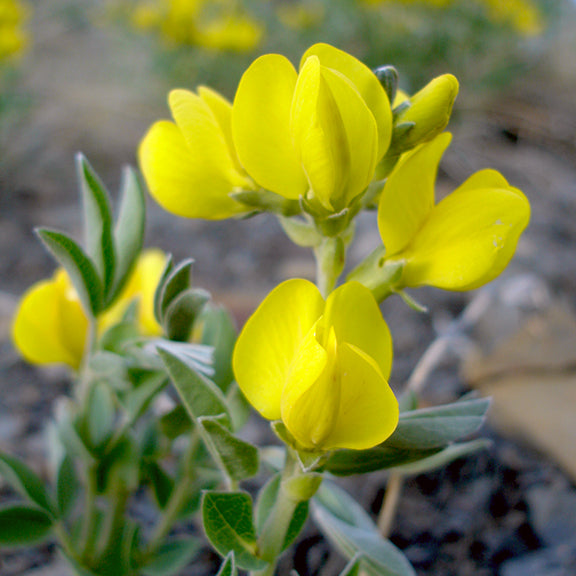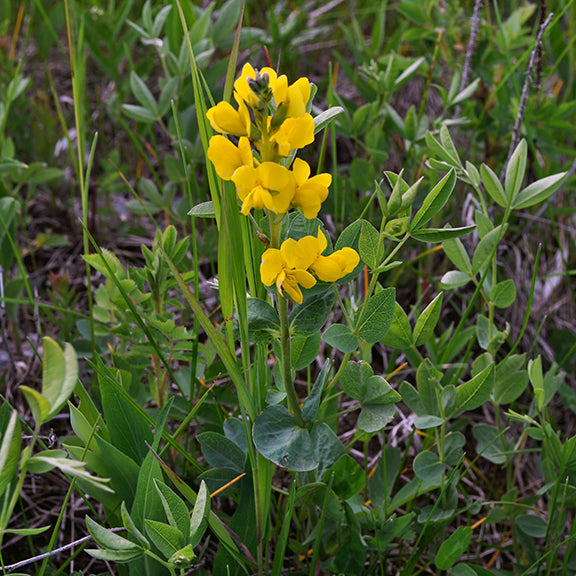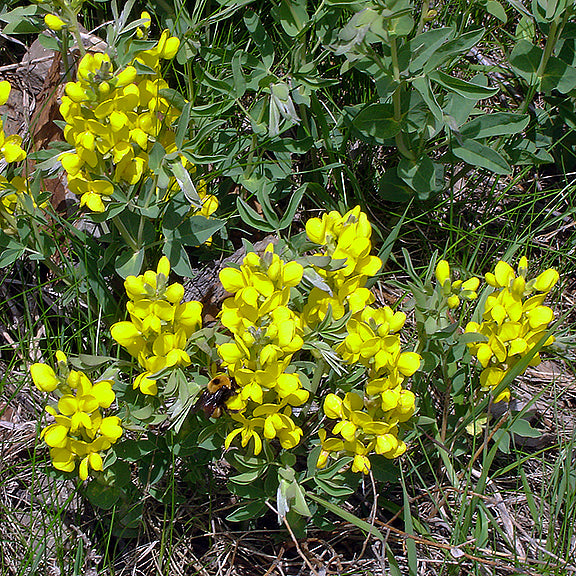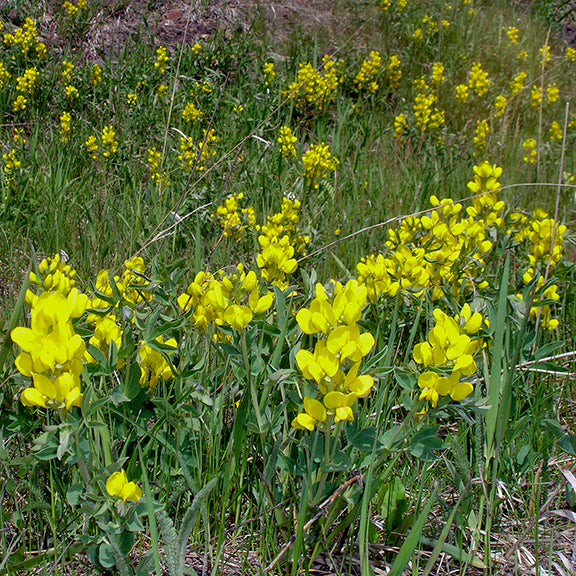Wild About Flowers
Thermopsis rhombifolia - Golden Beans
Thermopsis rhombifolia - Golden Beans
Couldn't load pickup availability
Golden Beans is a hardy perennial that welcomes spring with spikes of bright yellow, pea-like flowers rising above deep green, rhombus-shaped leaves. This tough native is an early-season favorite for pollinators, with lightly fragrant blooms, especially noticeable on warm spring days. It attracts bees and other pollinators with its nectar-rich flowers, while seeds may be eaten by birds or small mammals, though it is not a major wildlife food source. Its deep taproot makes it highly drought-tolerant, and as a nitrogen fixer, it helps improve soil health over time.
Well-suited to prairie plantings, dry meadows, sunny slopes, and restoration projects, Golden Beans is a standout choice for naturalized landscapes. Its bright yellow spring blooms and drought tolerance make it ideal for xeriscapes and low-maintenance rural or larger urban gardens. Moderately deer-resistant due to its tough, bitter foliage, though occasional browsing may occur.
Bloom Times & Plant Sizes
Bloom Times & Plant Sizes
Important Information - The "Bloom Period" is an indicator of the time period within which the wildflowers will bloom and does not describe the time period that a single plant will bloom. The "Sizes" listed are intended to be a general guideline to consult during plant selection. - Plant growth and bloom times will vary depending on geographical location & individual site conditions.
Edible & Medicinal Info Disclaimer
Edible & Medicinal Info Disclaimer
The Edible & Medicinal information on this site is for informational purposes only and should not be acted on without thorough research and professional guidance. We are not responsible for any adverse effects resulting from the use of or misidentification of plants.
Share




Plant Specifics
Seeds Per Pack
Seeds Per Package: 5
Light Conditions
- Sun
Soil Conditions
- Dry
- Sandy
- Gravelly
- Well Drained
Height
- Under 12"
- 12" - 24"
Width
- Spreading
Bloom Colour
- Yellow
Month of Bloom
- May
- June
Vigorousness
- Slow
- Moderate
Deer Resistance
- Moderate
Features
- Birds
- Bees
- Fragrant
- Fall Color
- Urban Spaces
- Rural Spaces
- Toxic or Posionous Parts
Chinook Exposure
- Fully Exposed
Distribution Info
Native to North America, its found in AB, SK, MB and the southeast tip of BC, extending southward into the Great Plains and lower canyons of the Rocky Mountains in the US. It thrives in dry grasslands and woodlands, often in open sandy areas in prairie and aspen forests where the water table is high.
Traditional Edible & Medicinal Info
⚠️ Toxicity Note: All parts of Thermopsis rhombifolia, especially the seeds and pods, contain alkaloids that are toxic if ingested in large quantities by humans or livestock. Not considered edible without proper traditional preparation.
It has no documented medicinal use and limit edible uses.Traditionally, Indigenous peoples also used the flowers to produce yellow dye.




